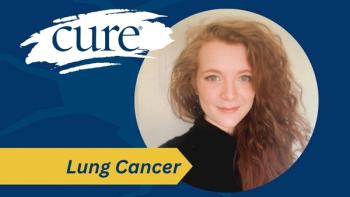
- Fall 2017
- Volume 5
- Issue 4
Managing Work-Life Balance After Cancer Treatment
Find out what accommodations you are entitled to under the law, and what your employer may offer.
When I was diagnosed with breast cancer in 2015, I was the primary breadwinner for my family and our source of medical insurance. I needed to work throughout my cancer treatment.
Work was also an anchor to the routines and order of my normal life, a source of meaning, self-esteem and social support. I also knew that my insurance costs would rise after treatment. The average annual medical costs are $4,187 higher for female cancer survivors and $3,293 higher for male cancer survivors than for their peers. For all these reasons, I never questioned whether I would work, only how.
My health care team supported my desire to work but provided little informational or practical support. One study indicates that just 1 in 4 people undergoing cancer treatment report receiving work-related advice from a medical provider, although those who did were more likely to return to work afterward.
Going Back to Work
More than one-third of those patients who receive a cancer diagnosis are of working age, and the majority will return to work sometime after diagnosis or treatment. Some work full time through treatment, while others choose to reduce schedules. The average time away from work is about five months.
Whether and how much a person is able to work depends on diagnosis, treatment and side effects; work tasks; workplace flexibility; and support from supervisors, co-workers, family and friends. Learning about the range of possible outcomes can be reassuring and helpful as you make work decisions.
Learn about national and local employment laws related to medical leave. The Family Medical Leave Act (FMLA), for instance, allows workers at companies with 50 or more employees to take up to 12 weeks of unpaid leave. Employed spouses may also use FMLA leave to care for their family members. And the leave can be taken intermittently, so employees can use this policy to take time off as needed to recover from side effects and still work on the days they feel more like themselves.
Discuss Workplace Factors With Your Health Care Team
Familiarize yourself with your workplace benefits. Can you work from home? Cancer survivors may prefer a break from the constant well-meaning questions about their health and appreciate the privacy if they are adjusting to changes such as hair loss, ostomy bags and mastectomies.
Those with earlier-stage cancers, curative surgeries and no postoperative complications will likely have the easiest time returning to work quickly.
But be sure to discuss your work duties and workplace policies, flexibility and support systems with your health care providers. Survivors returning to work should be aware of lingering fatigue and side effects that may be disruptive to their work.
Even after treatment, medical follow-up continues periodically. Let your providers know your preferences about when you can be contacted at work. Many employees do not have a private space at work to take calls or process news. Some doctors keep track of when their patients prefer to receive calls and can help patients better manage their time and reduce the emotional distress.
When your health team understands your work responsibilities and your preferences regarding work, they can be more successful in helping you navigate your whole cancer journey.
Ginger Hanson, Ph.D., M.S., is an assistant professor at the Johns Hopkins School of Nursing in Baltimore.
Articles in this issue
about 8 years ago
Celebrate Life as a Survivorabout 8 years ago
Poet Momabout 8 years ago
Documentary Features Wisdom from Cancer Survivorsabout 8 years ago
An Evolution of Complementary Cancer Therapyabout 8 years ago
Tap Into the Santosha of Meditation and Release Your Cancer Stressabout 8 years ago
Complementary Therapies for Cancer Treatment Are Coming of Age



